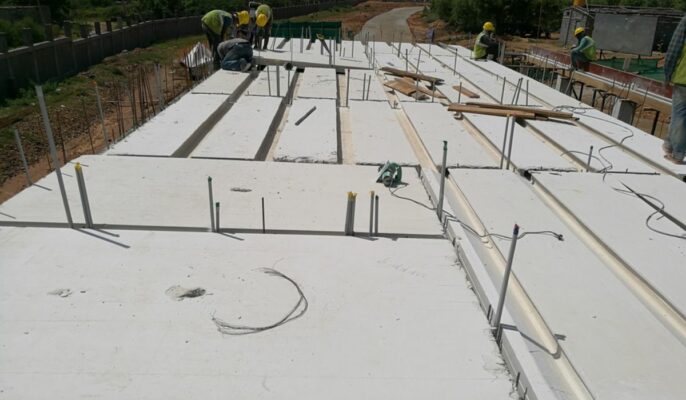The increasing housing demand in India is depleting raw building materials/ sources. As a result, the cost of building materials is rising. In this circumstance, India demands new high-efficiency construction materials for solid and long-lasting homes at a low price. As a result, most builders increasingly select eco-friendly materials such as Glass Fibre Reinforced Gypsum (GFRG). If you are renovating or creating a new home, you may have come across GFRG Panels, which are now in style and provide a pristine aesthetic to your home.
Source: Pinterest
What are GFRG Panels?
GFRG is an abbreviation for Glass Fibre Reinforced Gypsum. These panels are composed of gypsum plaster, well-known for its durability and overall appearance. GFRG panels are also known as Rapid walls by those in the building industry. The material was invented in Australia in early 1990s, and the use has grown all over the world due to its qualities.
Source: Pinterest
GFRG Panels Pros
- Since construction time is less for these panels, one can save time and money.
- It has excellent thermal efficiency, and the expenses for cooling and heating these materials are lower.
- These panels do not require any beams or columns to be installed.
- These panels require little to no maintenance and have a long life cycle.
- The usage of cement and sand decreases if you use these panels, decreasing the carbon footprint, so you may use this material if you are looking for ecologically sound building materials.
See also: 3D printed house: All you need to know about India’s first 3D-printed home
GFRG Panels cons
- GFRG panels must be precisely stacked to minimise deformation, damage, and abrasion. As a result, it should be placed vertically on the support that extends the whole length of the panel.
- The panels must be handled with extreme caution. The panel must be moved slowly and carefully to avoid excessive drooping, cracking, or damage to the sides, edges, and corners.
- Cutting the GFRG panel should be done using appropriate equipment
- Extreme caution should be exercised when loading, transporting, and unloading GFRG panels.
Source: Pinterest
Know about: GFRG Panels
Factors to evaluate before deciding on GFRG panels
Now that you have read about the advantages and limitations of GFRG Panels, let’s look into the criteria for selecting these panels. Due to their unique characteristics, deciding whether or not to employ these panels in the building may be tricky. Although it is a lightweight and durable material, the machinery required for it is unique, which might raise your costs.
Secondly, installing such panels becomes considerably more difficult if you pick intricate and elaborate designs.
Finally, consider how long you want to use it; GFRG panels have a long life, and you do not wish to squander materials on a transitory structure.
GFRG panels price
A square metre of GFRG panels costs Rs 1120, whereas a total panel costs around Rs 40,000. They allow for significant reductions in the usage of traditional building materials. For example, cement use may be decreased by over 50%, steel by 35%, and sand by a whopping 76%.
Source: Pinterest
Also read about AAC block prices and sizes
